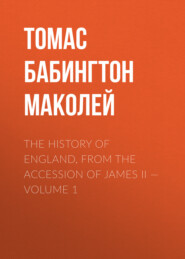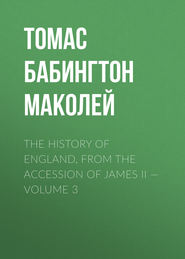По всем вопросам обращайтесь на: info@litportal.ru
(©) 2003-2024.
✖
Miscellaneous Writings and Speeches — Volume 2
Настройки чтения
Размер шрифта
Высота строк
Поля
on the square mile............... 4457 4510 4060
These are strong cases. But we have a still stronger case. Take the whole of the third, fourth, and fifth divisions into which Mr Sadler has portioned out the French departments. These three divisions make up almost the whole kingdom of France. They contain seventy-nine out of the eighty-five departments. Mr Sadler has contrived to divide them in such a manner that, to a person who looks merely at his averages, the fecundity seems to diminish as the population thickens. We will separate them into two parts instead of three. We will draw the line between the department of Gironde and that of Herault. On the one side are the thirty-two departments from Cher to Gironde inclusive. On the other side are the forty-six departments from Herault to Nord inclusive. In all the departments of the former set, the population is under 132 on the square mile. In all the departments of the latter set, it is above 132 on the square mile. It is clear that, if there be one word of truth in Mr Sadler's theory, the fecundity in the latter of these divisions must be very decidedly smaller than in the former. Is it so? It is, on the contrary, greater in all the three tables. We give the result.
The number of births to 1000 marriages is—
1st Table 2nd Table 3rd Table
In the thirty-two departments in
which there are from 86 to 132
people on the square mile....... 4210 4199 3760
In the forty-seven departments in
which there are from 132 to 417
people on the square mile........ 4250 4224 3766
This fact is alone enough to decide the question. Yet it is only one of a crowd of similar facts. If the line between Mr Sadler's second and third division be drawn six departments lower down, the third and fourth divisions will, in all the tables, be above the second. If the line between the third and fourth divisions be drawn two departments lower down, the fourth division will be above the third in all the tables. If the line between the fourth and fifth division be drawn two departments lower down, the fifth will, in all the tables, be above the fourth, above the third, and even above the second. How, then, has Mr Sadler obtained his results? By packing solely. By placing in one compartment a district no larger than the Isle of Wight; in another, a district somewhat less than Yorkshire; in the third, a territory much larger than the island of Great Britain.
By the same artifice it is that he has obtained from the census of England those delusive averages which he brings forward with the utmost ostentation in proof of his principle. We will examine the facts relating to England, as we have examined those relating to France.
If we look at the counties one by one, Mr Sadler's principle utterly fails. Hertfordshire with 251 on the square mile; Worcester with 258; and Kent with 282, exhibit a far greater fecundity than the East Riding of York, which has 151 on the square mile; Monmouthshire, which has 145; or Northumberland, which has 108. The fecundity of Staffordshire, which has more than 300 on the square mile, is as high as the average fecundity of the counties which have from 150 to 200 on the square mile. But, instead of confining ourselves to particular instances, we will try masses.
Take the eight counties of England which stand together in Mr Sadler's list, from Cumberland to Dorset inclusive. In these the population is from 107 to 150 on the square mile. Compare with these the eight counties from Berks to Durham inclusive, in which the population is from 175 to 200 on the square mile. Is the fecundity in the latter counties smaller than in the former? On the contrary, the result stands thus:
The number of children to 100 marriages is—
In the eight counties of England, in which there are
from 107 to 146 people on the square mile............. 388
In the eight counties of England, in which there are
from 175 to 200 people on the square mile..............402
Take the six districts from the East Riding of York to the County of Norfolk inclusive. Here the population is from 150 to 170 on the square mile. To these oppose the six counties from Derby to Worcester inclusive. The population is from 200 to 260. Here again we find that a law, directly the reverse of that which Mr Sadler has laid down, appears to regulate the fecundity of the inhabitants.
The number of children to 100 marriages is—
In the six counties in which there are from 150 to 170
people on the square mile................................392
In the six counties in which there are from 200 to 260
people on the square mile................................399
But we will make another experiment on Mr Sadler's tables, if possible more decisive than any of those which we have hitherto made. We will take the four largest divisions into which he has distributed the English counties, and which follow each other in regular order. That our readers may fully comprehend the nature of that packing by which his theory is supported, we will set before them this part of his table.
(Here follows a table showing for population on a square mile the proportion of births to 100 marriages, based on figures for the years 1810 to 1821.
100 to 150...396
150 to 200...390
200 to 250...388
250 to 300...378)
These averages look well, undoubtedly, for Mr Sadler's theory. The numbers 396, 390, 388, 378, follow each other very speciously in a descending order. But let our readers divide these thirty-four counties into two equal sets of seventeen counties each, and try whether the principle will then hold good. We have made this calculation, and we present them with the following result.
The number of children to 100 marriages is—
In the seventeen counties of England in which there
are from 100 to 177 people on the square mile..........387
In the seventeen counties in which there
are from 177 to 282 people on the square mile..........389
The difference is small, but not smaller than differences which Mr Sadler has brought forward as proofs of his theory. We say that these English tables no more prove that fecundity increases with the population than that it diminishes with the population. The thirty-four counties which we have taken make up, at least four-fifths of the kingdom: and we see that, through those thirty-four counties, the phenomena are directly opposed to Mr Sadler's principle. That in the capital, and in great manufacturing towns, marriages are less prolific than in the open country, we admit, and Mr Malthus admits. But that any condensation of the population, short of that which injures all physical energies, will diminish the prolific powers of man, is, from these very tables of Mr Sadler, completely disproved.
It is scarcely worth while to proceed with instances, after proofs so overwhelming as those which we have given. Yet we will show that Mr Sadler has formed his averages on the census of Prussia by an artifice exactly similar to that which we have already exposed.
Demonstrating the Law of Population from the Censuses of Prussia at two several Periods.
(Here follows a table showing for inhabitants on a square league the average number of births to each marriage from two different censuses.)
1756 1784
832 to 928...4.34 and 4.72
1175 to 1909...4.14 and 4.45 (including East Prussia at 1175)
2083 to 2700...3.84 and 4.24
3142 to 3461...3.65 and 4.08
Of the census of 1756 we will say nothing, as Mr Sadler, finding himself hard pressed by the argument which we drew from it, now declares it to be grossly defective. We confine ourselves to the census of 1784: and we will draw our lines at points somewhat different from those at which Mr Sadler has drawn his. Let the first compartment remain as it stands. Let East Prussia, which contains a much larger population than his last compartment, stand alone in the second division. Let the third consist of the New Mark, the Mark of Brandenburg, East Friesland and Guelderland, and the fourth of the remaining provinces. Our readers will find that, on this arrangement, the division which, on Mr Sadler's principle, ought to be second in fecundity stands higher than that which ought to be first; and that the division which ought to be fourth stands higher than that which ought to be third. We will give the result in one view.
The number of births to a marriage is—
In those provinces of Prussia where there are fewer than
1000 people on the square league.......................4.72
Другие электронные книги автора Томас Бабингтон Маколей
Lays of Ancient Rome




 4.67
4.67












